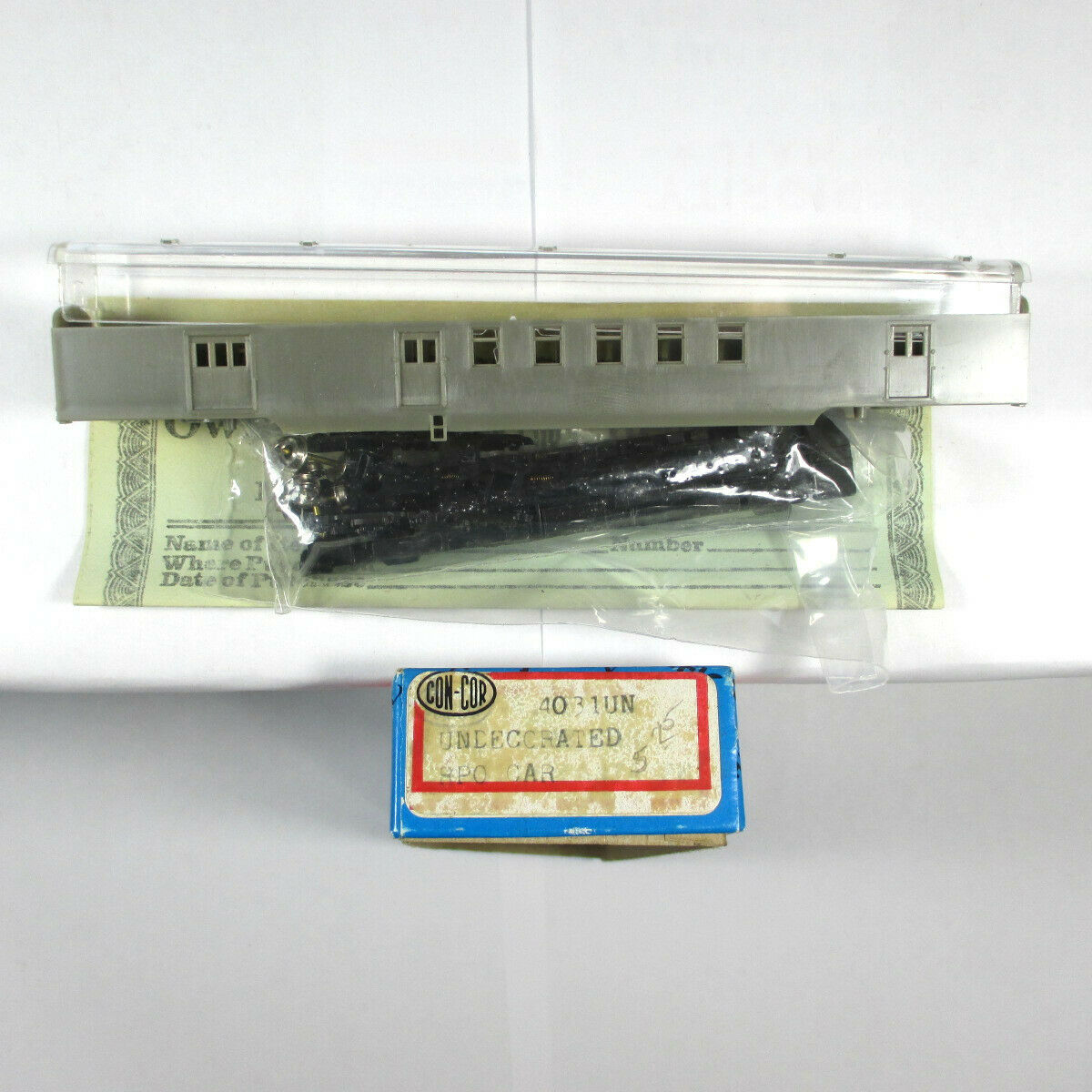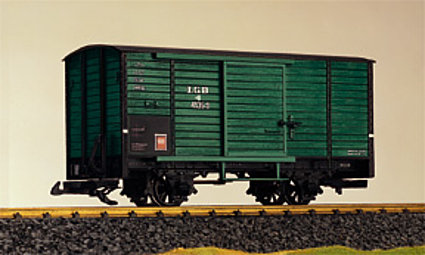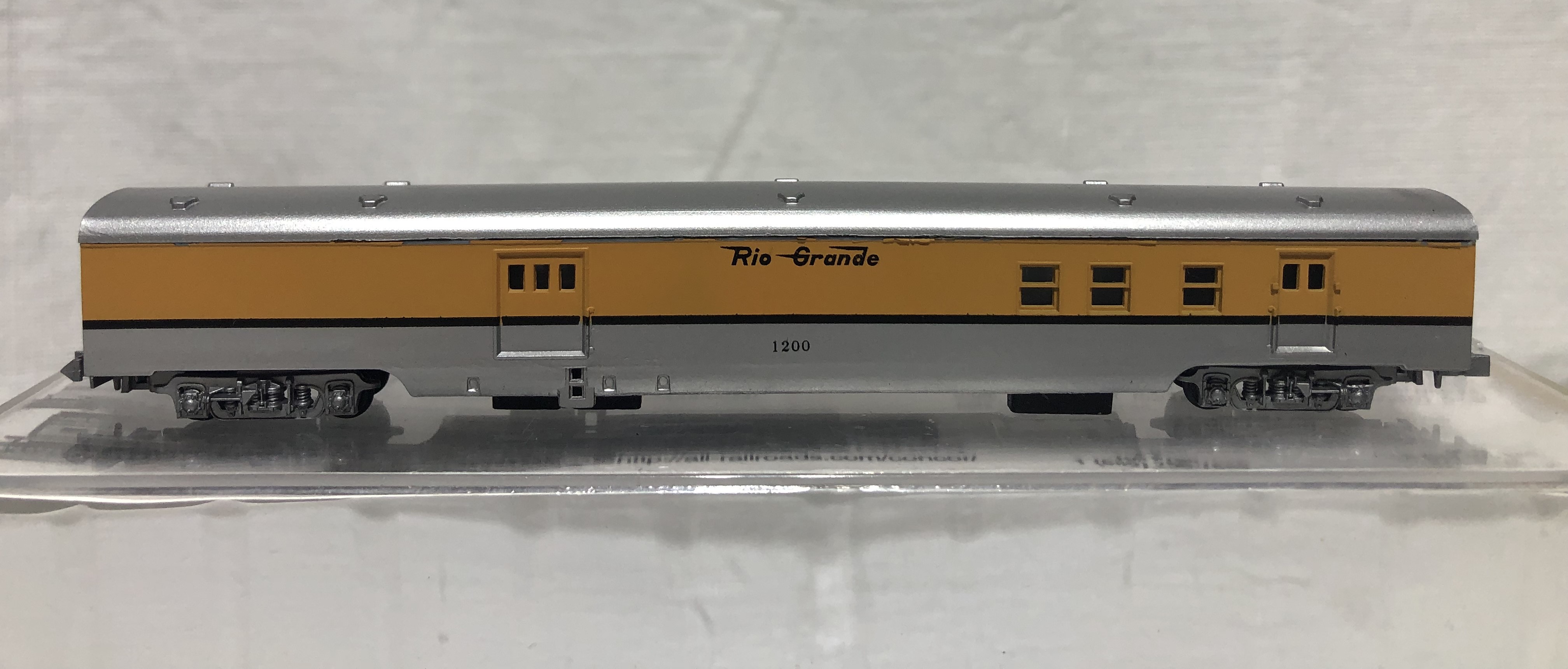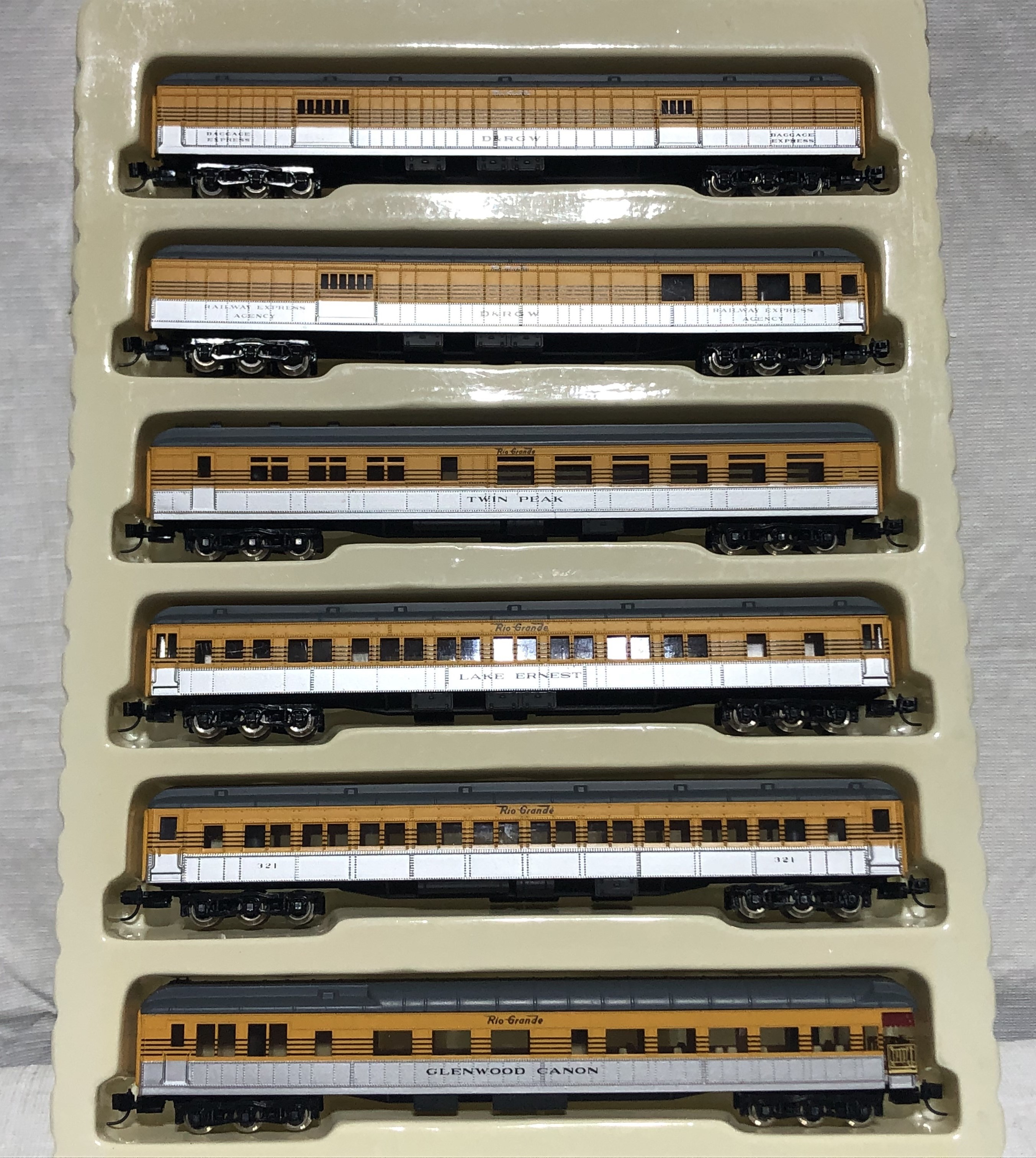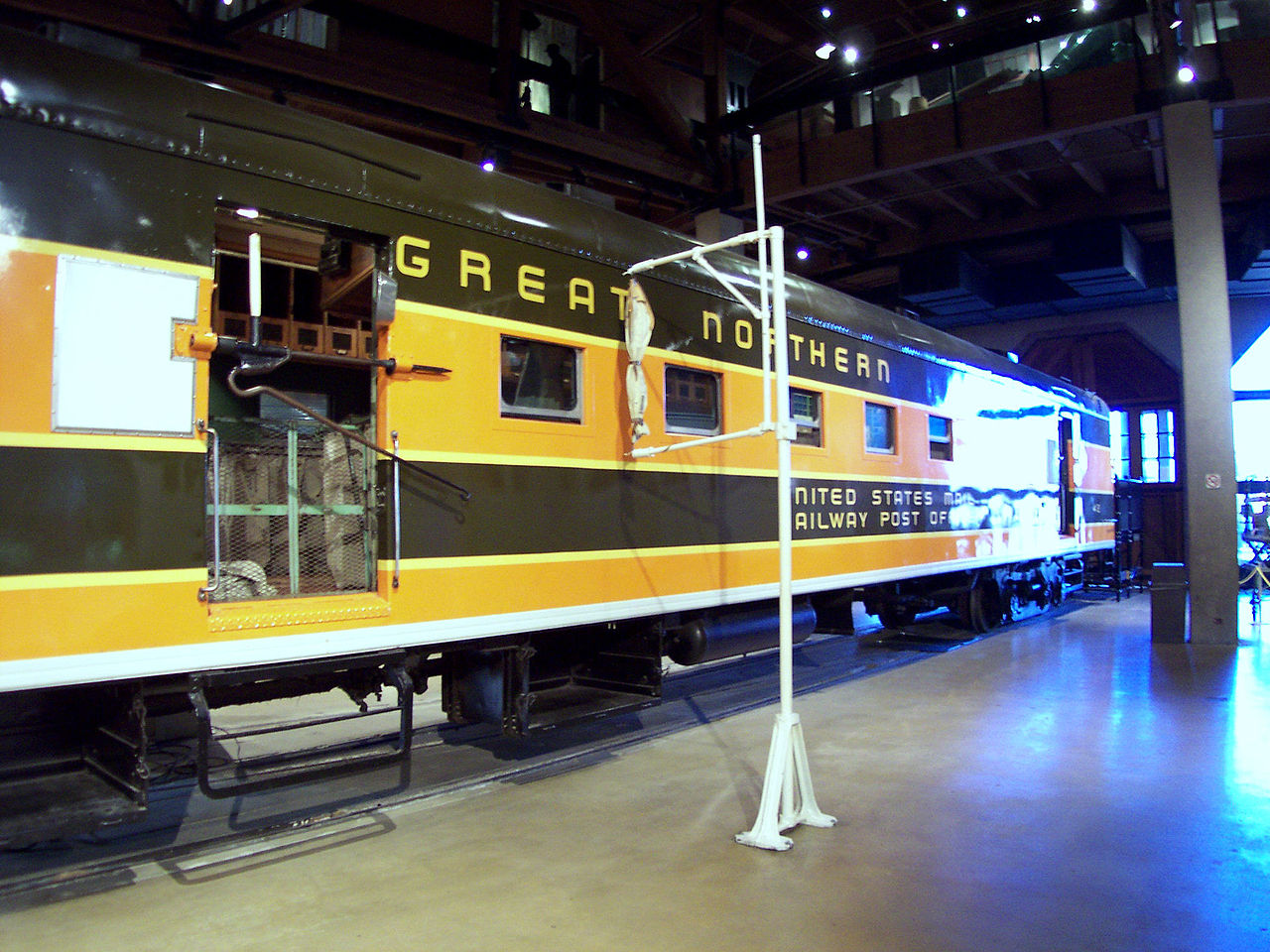Specific Item Information: .
Model Information: This model was designed by Con-Cor in the 1970s. It is modeled after the AC&F RPO built for GN in 1950-51 as series 37-42. It has a 60’ RPO compartment, with 5 windows in the middle of the car, and 3 doors The double windows on the model are however different from the prototype, that are smaller single windows.
The molds were damaged at some point, so the production of this model stopped definitively by end of the 1980s. Con-Cor redesigned a new RPO, modeled after a Pullman Standard build for the GN; the newer RPO (still produced) has only 3 double-windows, located at one end of the car, and only 2 doors.
The molds were damaged at some point, so the production of this model stopped definitively by end of the 1980s. Con-Cor redesigned a new RPO, modeled after a Pullman Standard build for the GN; the newer RPO (still produced) has only 3 double-windows, located at one end of the car, and only 2 doors.
Prototype History: In the post-war period, passenger rail service boomed. In order to increase efficiency, the railroads set to replacing their old wood, steel and concrete heavyweight passenger cars with newer lightweight, streamlined cars. The new cars were made from stainless steel, aluminum and Cor-Ten steel. These cars required less motive power to pull and were cheaper to manufacture. Production was also concentrated in a few manufacturers rather than each railroad making its own. This led to standardization which further reduced costs. The new "lightweight" cars were also given "streamlined" designs to make them more visually appealing. Budd, Pullman Standard and ACF were all well known manufacturers of these cars.
A railway post office, commonly abbreviated as RPO, was a railroad car that was normally operated in passenger service as a means to sort mail en route, in order to speed delivery. The RPO was staffed by highly trained Railway Mail Service postal clerks, and was off-limits to the passengers on the train.
This particular prototype represents the AC&F RPO-baggage built for GN in 1950-51 as series 37-42. It has a 60’ RPO compartment, with 5 windows and 2 doors, and a third door for the storage / baggage section. See here for more details.
Read more about RPOs on Wikipedia
A railway post office, commonly abbreviated as RPO, was a railroad car that was normally operated in passenger service as a means to sort mail en route, in order to speed delivery. The RPO was staffed by highly trained Railway Mail Service postal clerks, and was off-limits to the passengers on the train.
This particular prototype represents the AC&F RPO-baggage built for GN in 1950-51 as series 37-42. It has a 60’ RPO compartment, with 5 windows and 2 doors, and a third door for the storage / baggage section. See here for more details.
Read more about RPOs on Wikipedia
Road Name History:  Although they may be molded in color, unpainted and unlettered, undecorated products are marketed to modelers who seek to custom decorate their models for private roads and/or road and/or company names that were not commercially produced by any of the major manufacturers.
Although they may be molded in color, unpainted and unlettered, undecorated products are marketed to modelers who seek to custom decorate their models for private roads and/or road and/or company names that were not commercially produced by any of the major manufacturers.
Undecorated models are frequently also unassembled or only partially assembled and required modelers to be comfortable with glue, paint and sometimes solder in order to prepare their models for display. Materials for these models can vary but often include plastic, pewter and resin. Models may or may not come with decals or other decorations such as plastic signage, railings and ladders to enhance the appearance of the final product.

Undecorated models are frequently also unassembled or only partially assembled and required modelers to be comfortable with glue, paint and sometimes solder in order to prepare their models for display. Materials for these models can vary but often include plastic, pewter and resin. Models may or may not come with decals or other decorations such as plastic signage, railings and ladders to enhance the appearance of the final product.
Brand/Importer Information: Con-Cor has been in business since 1962. Many things have changed over time as originally they were a complete manufacturing operation in the USA and at one time had upwards of 45 employees. They not only designed the models,but they also built their own molds, did injection molding, painting, printing and packaging on their models.
Currently, most of their manufacturing has been moved overseas and now they import 90% of their products as totally finished goods, or in finished components. They only do some incidental manufacturing today within the USA.
Important Note: The Con-Cor product numbering can be very confusing. Please see here in the article how to properly enter Con-Cor stock numbers in the TroveStar database.
Currently, most of their manufacturing has been moved overseas and now they import 90% of their products as totally finished goods, or in finished components. They only do some incidental manufacturing today within the USA.
Important Note: The Con-Cor product numbering can be very confusing. Please see here in the article how to properly enter Con-Cor stock numbers in the TroveStar database.
Item created by: gdm on 2019-07-08 18:10:23. Last edited by Alain LM on 2020-11-11 04:08:48
If you see errors or missing data in this entry, please feel free to log in and edit it. Anyone with a Gmail account can log in instantly.
If you see errors or missing data in this entry, please feel free to log in and edit it. Anyone with a Gmail account can log in instantly.


